
Ghostlands
Walking Through a Landscape of Pain in the Caucasus, how a Slaughter still haunts Turkey and Armenia a century later.
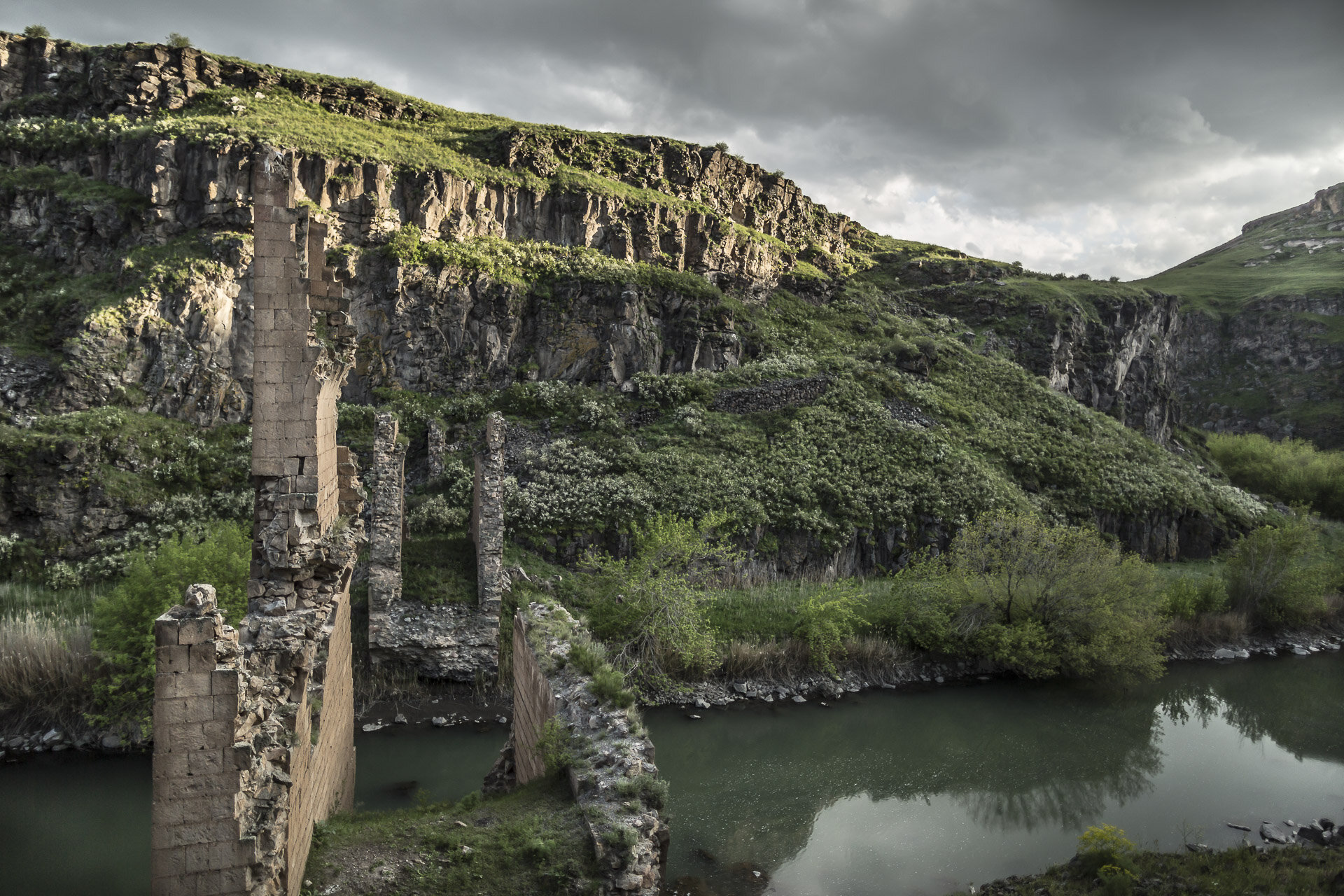
The bridge that once connected Turkey to Armenia, now in ruins and a symbol of the broken link between neighboring nations located in the historic and ancient city of Ani, Turkey. Ani was once a thriving Armenian City, dating back hundreds of years.
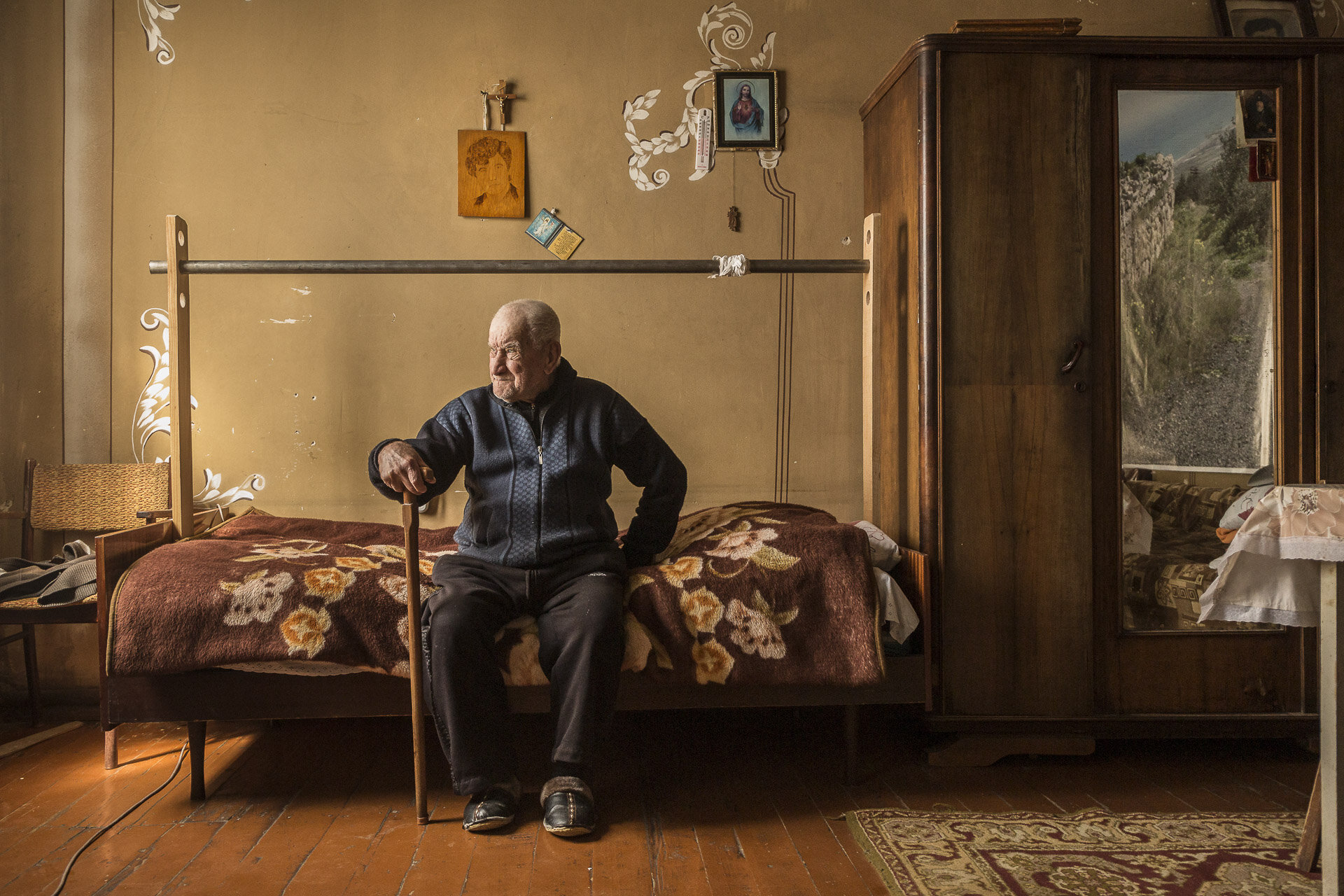
Survivor, Movses Haneshyan, 105 years old, at his home in Armenia. Movses was born in a village located atop Musa Dagh Mountain in present-day Eastern Turkey. He survived the Armenian Genocide when a man of Arab descent kept him and his father to safety. Two years later he was smuggled into Syria with his father dressed as an Arab. In the late 1930s Movses and a new wife arrived in Armenia.

Survivor, Farkha Hakobyan, 107, born in Turkey in 1908, today at her home in Sasounik, Armenia. She survived the Armenian Genocide in Turkey by making it with her family to Armenia.

Survivor, Varazdat Manukyan, 104, was born in Kars, Turkey, in 1911, as his home in Gyumri, Armenia. His wife Vard Manukyan was born in 1924 and died in 2000. He lost his parents and family during the Genocide in 1915 and fled as a five-year-old child.

Survivor, Malak Botoyan is 111. She escaped the Genocide in 1915 with her family, moving from Alashkert in Turkey, to Artik in Shirak province, present day Armenia. The family returned to Alashkert soon after the 1915 killings, but had to again move to Armenia in 1920 as the oppression against Armenians continued.
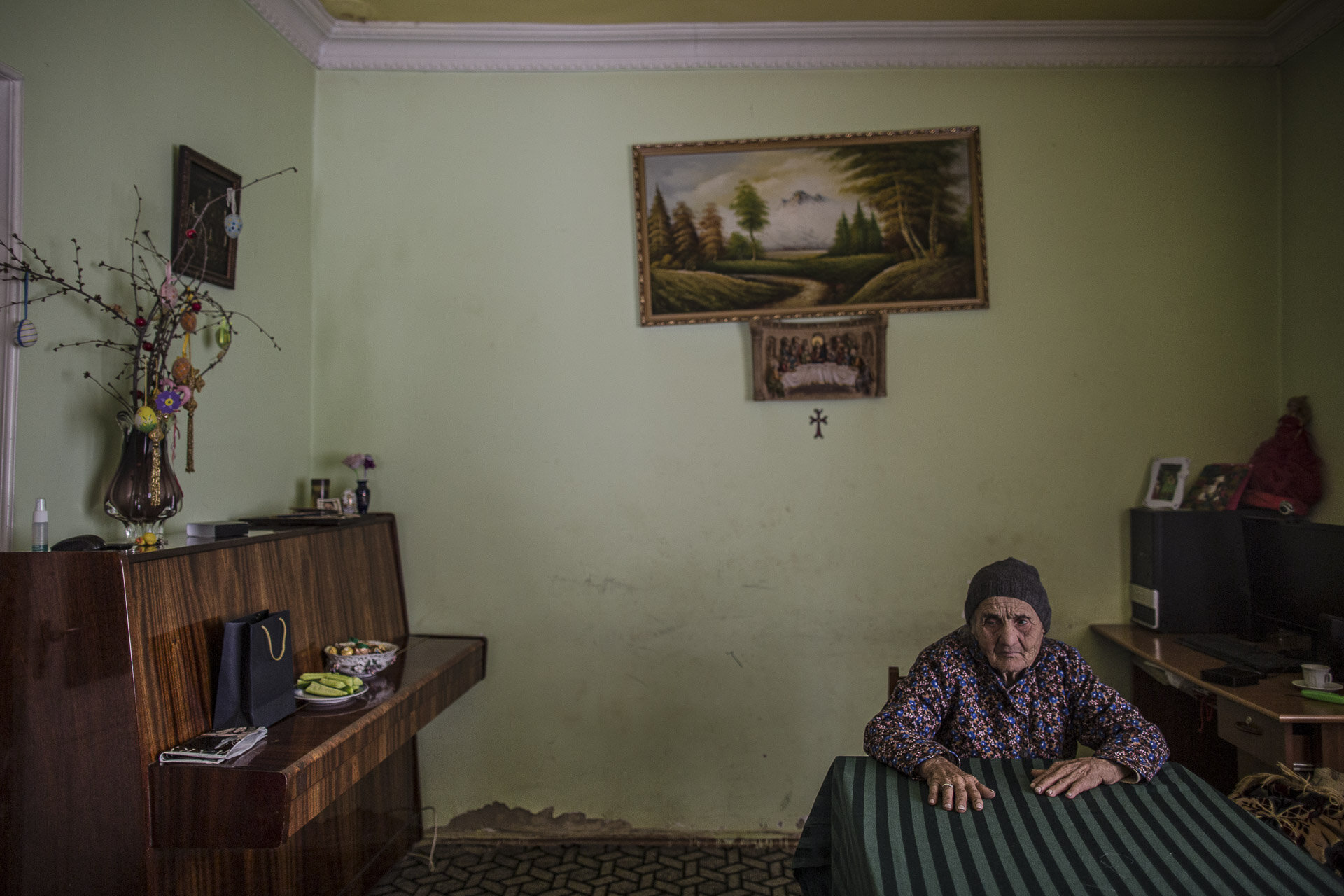
Survivor Nektar Alatuzyan 101, comes from Khdrbek village on Mousa Dagh mountain in Turkey. French boats saved her family and other Mousa Dagh inhabitants from the Genocide in 1915 when Nektar was 1. They arrived in Armenia four years later.

The narrow-gauge Turkish railway line terminates at a locomotive depot in Akhuryan station in Akhourik, Armenia. Only one white dove remains where two once hung upon the depot doors, symbols once representing peace between neighbors. Inside is a Turkish train. The Akhuryan station was once a primary trade link between Turkey and Armenia. In 1992 the station closed when the war broke out in Nagorno-Karabakh.

Manvel Poleyan, 5, returns home from kindergarten. He lives next to the Akhuryan train station in Akhourik village with his family. The Akhuryan station is located two kilometers from the Turkish border and was once a primary link between Armenia and Turkey.

Inside the abandoned Akhuryan train station in Akhourik village. The Akhuryan station is located two kilometers from the Turkish border and was once a primary link between Turkey and Armenia, a key link for trade between Armenia and Turkey.

The waiting room inside the abandoned Akhuryan train station in Akhourik village. The Akhuryan station is located two kilometers from the Turkish border and has been closed since when the war broke out in Nagorno-Karabakh between Armenia and Azerbaijan.

A poetic fence made from old window frames next to an Armenian home in the outskirts of Gyumri, Armenia.

Gevorg Kirakosyan, 61, with his cat in Zarishat (often referred to as Ghunjali), a bordering village in a remote region of northeastern Armenia, located right next to Turkey. Gevorg's grandparents came from Mush in Turkey and settled in Bayandur village, Armenia, at the beginning of the 20th century. Gevorg is a veteran of the Nagorno Karabakh war (1990-1994).

Green lamp at the home of Varazdat Manukyan, 104, in Gyumri, Armenia. Varazdat was born in Kars, Turkey, in 1911. In 1915 he fled as a five-year-old child to Armenia.
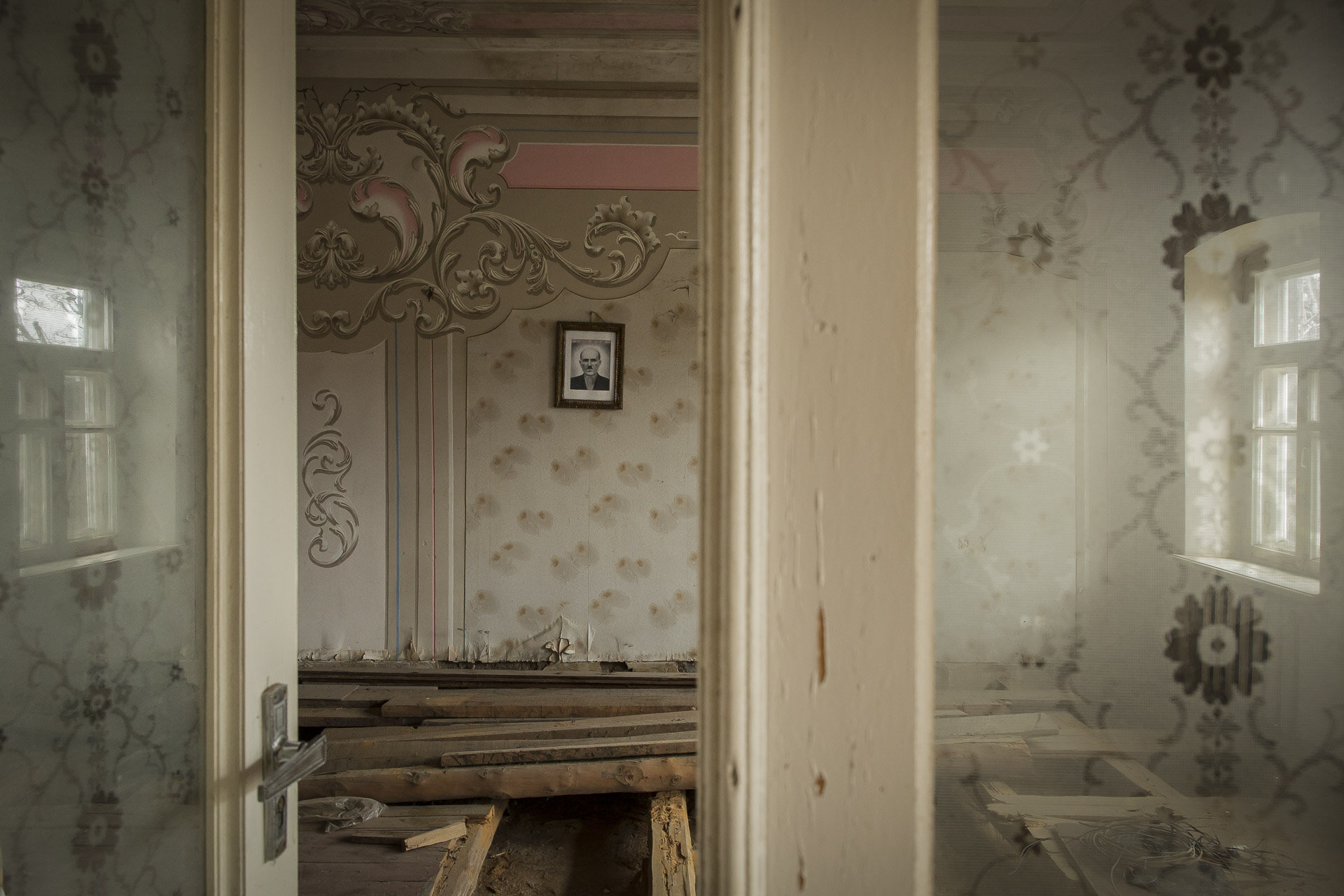
Portrait of Arshak Manukyan hangs on the wall of his son's home, Varazdat Manukyan's, in Gyumri, Armenia. Varazdat's father was killed during the genocide. Varazdat was born in Kars, Turkey, in 1911 and fled as a five-year-old to Armenia.

Snow falling in Zovasar, a small village in the mountains of Aragatsotn Province. Zovasar was settled by ethnic Armenians who fled Eastern Turkey during the genocide. Grandparents always told their offspring there was no need to develop Zovasar village nor build new homes, believing they would return to Eastern Turkey. One hundred years later little has changed where many still live in the exact structures their families built between 1915 through 1922.

Mnatsakan Poleyan, 76, holding a box containing a bible and other religious items which his mother, Viktoria Poleyan (1896-1987), carried from Eastern Turkey. She fled the Genocide in 1915 and reached Armenia in the early 1920s. She came from Gleguzan Merker village in Turkey's Sasoun province.

Sheep returning to Zovasar, a small village in the mountains of Aragatsotn Province. Zovasar was settled by ethnic Armenians who fled their homes in Eastern Turkey during the genocide between 1915-22.

Painting of the Mona Lisa in the home of Albert Sargsyan located in Zovasar, Armenia. All the residents of Zovasar connect to one village back in neighboring Turkey, having arrived to Zovasar during the genocide years.

An American flag air freshener inside a Russian Lada parked in Zovasar, a small village in the mountains of Aragatsotn Province. Zovasar was settled by ethnic Armenians who fled their homes in Eastern Turkey during the genocide between 1915-22.
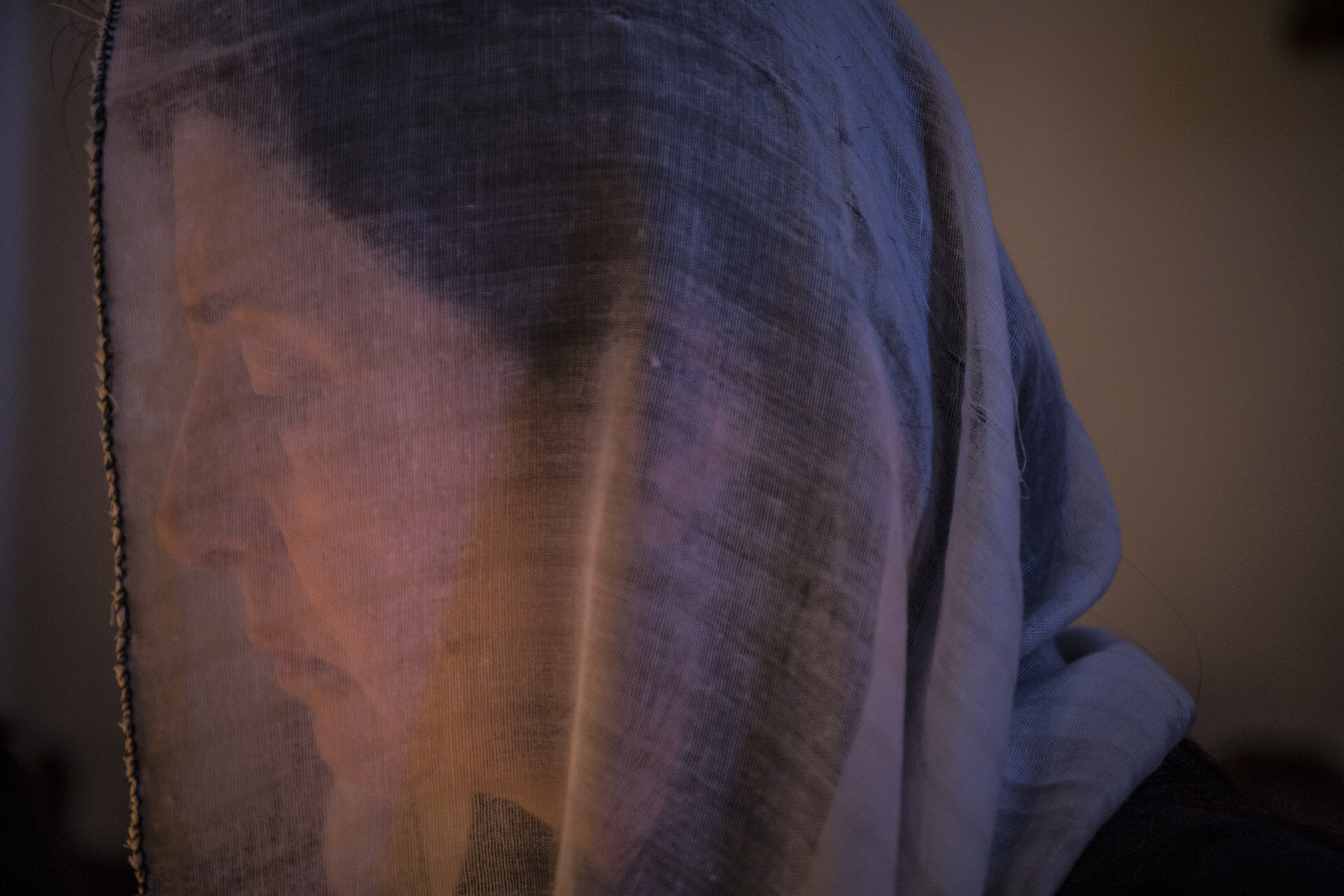
One day before the centennial of the Armenian genocide, a woman lights candles at the Ceremony of Canonization of the Armenian Genocide Victims at the Mother See of Holy Etchmiadzin shrine in Etchmiadzin, Armenia.

On the eve of the 100th anniversary of the Armenian genocide, women lead the annual march with torches through Yerevan as tens of thousands march towards the Armenian Genocide Memorial to pay respect to the 1.5 million Armenians who died between 1915-1923.

A man wears a "1915, A Failed Genocide" t-shirt with thousands of others praying and listening to sermons during the Ceremony of Canonization of the Armenian Genocide Victims at the Mother See of Holy Etchmiadzin shrine in Etchmiadzin, Armenia.
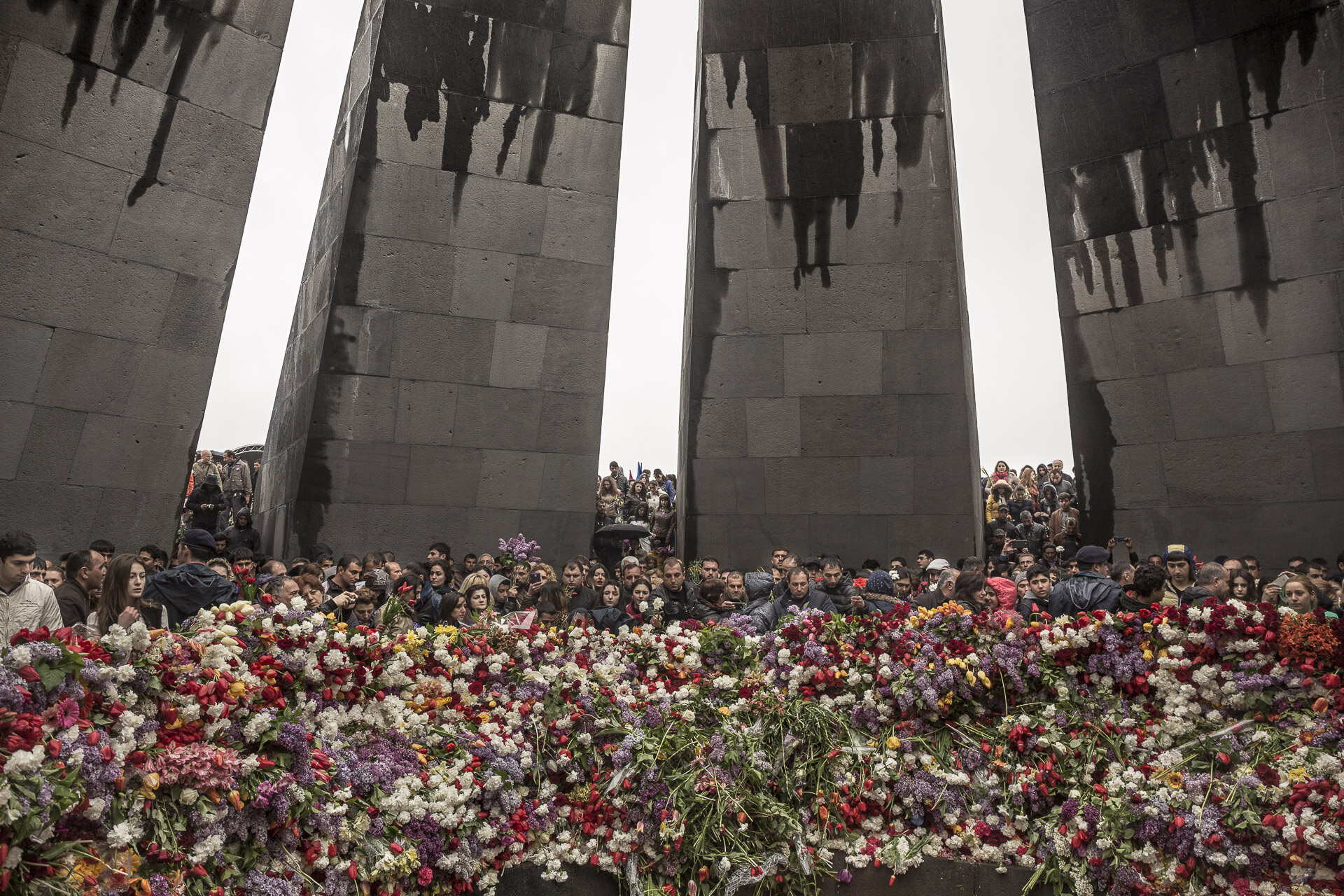
Tens of thousands of people pay respect to the 1.5 million who died between 1915-1923 at the Armenian Genocide Memorial in Yerevan, Armenia, on the day marking the 100th anniversary of the Armenian Genocide.

Portraits of Armenak Khachatryan (1932-2014) and Servenik Khachatryan (1934-2008) in their untouched bedroom, the mother and father of Vahan Khachatryan, 57, at their son's home in Zovasar, Aragatsotn Province, Armenia. All the inhabitance of Zovasar village fled their homes in Sasun or Sassoun (today called Sason) District in the Batman Province of Eastern Turkey during the genocide between 1915-22.

Vahandukht at her home in Ani, Armenia, at the border with Turkey. She is the last Armenian living in Ani, today a militarized zone bordering Ani, Turkey.
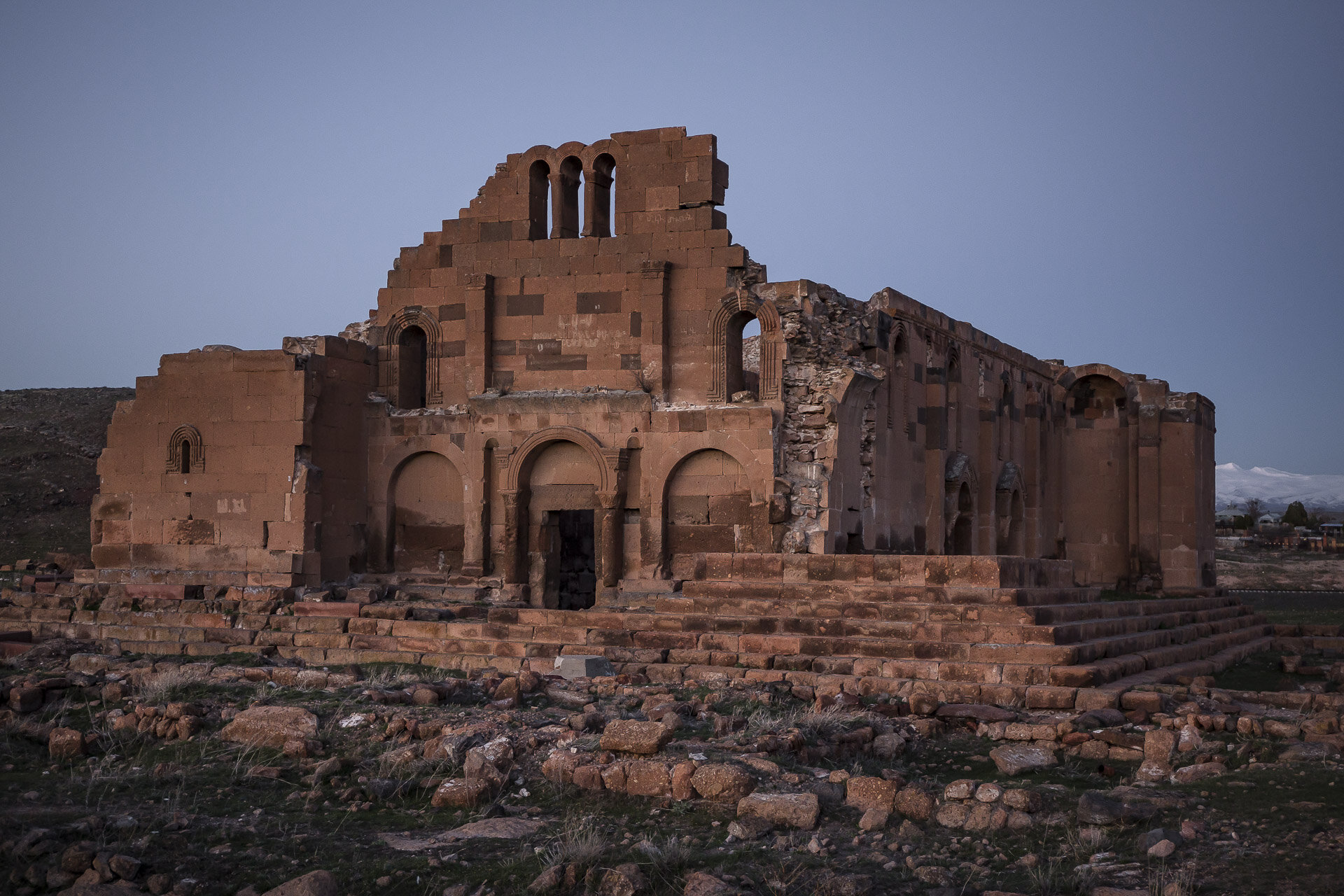
The remains of Yererouk Basilica, a 5th-century Armenian church in Anipemza, Armenia.

Fuel pipes in a village in northern Armenia, a legacy of the Russian era. It is through a most elaborate configuration of above-ground pipes that heating fuel is brought to the homes of 2.3 million Armenians.

Qaghtsrik Petrosyan, 76, speaks to her grandson, Daniel Petrosyan, 3, and her son, Hmayak Petrosyan, 46, over Skype from her 100-year-old home in Zovasar, a small village in the mountains of Aragatsotn Province. Like many Armenian men, Hymayak works in Russia due to a lack of good-paying jobs in Armenia.

Laundry swaying in Armenia on the outskirts of Gyumri as a storm arrives from Turkey.

Samvel Torosyan, a descendent of Armenians who once lived in Sasun, Turkey, at their home in Armenia. Nearly everyone from Sasun fled or died in the genocide. Only a few ethnic Armenian Christians remain in Sasun, today called Sason.

The only remaining bridge linking road access between Armenia and Turkey viewed through an electric fence at the border of Armenia and Turkey.
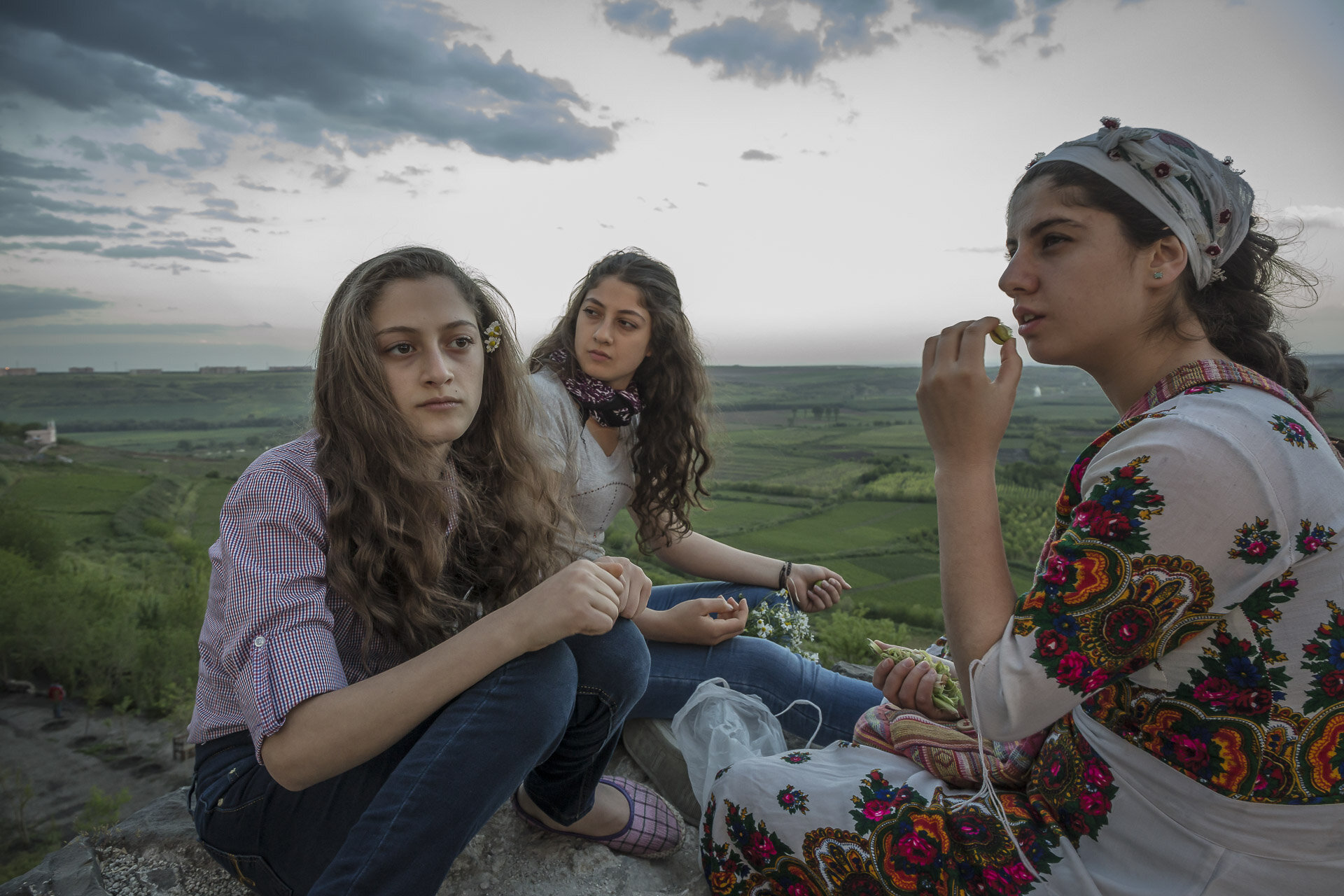
Ronahi 15, Delal, 17 and Mizgin, 21, (L-R) all from Diyarbakir, enjoy a snack atop Keçi Burcu Wall or the Diyarbakir Wall in Diyarbakir, Turkey.

Remains of the Surp Garabed Armenian Monastery located in Cungus, Turkey. Before 1915, this region of Cungus was heavily populated by Christian Armenians. At the end of World War I and during the years of the Genocide, all ethnic Armenians fled their homes or were killed, with Kurds and Turks taking possession of their properties and land.

Remains of a home in Cungus, formerly owned by Conto Murad, the last Armenian owner. Built in1882, at the end of World War I in Turkey, this region of Cungus in Anatolia was heavily populated by Armenians. They fled during the genocide, leaving their homes, livestock and belongings.

Local people say the chasm in eastern Turkey known as Düden was a mass grave for Armenians pushed to their deaths during the ethnic cleansing in World War I.

Arif Oruç, 53, is an ethnic Armenian who lives in Bismil town near Batman, Turkey. One hundred years ago, his father survived the genocide in Turkey by converting to Islam. He and his children have never married out of their ethnicity, with his wife also being an ethnic Armenian whose family convert to Islam. Their children plan to marry only an ethnic Armenian Muslim.

Storms in the Anatolia region of eastern Turkey, in a region formerly populated by ethnic Armenians before the Armenian genocide that began in 1915.

Abdurrahim Temel, 25, a Kurdish shepherd, tends his sheep on the hills in the Anatolia region of eastern Turkey on the outskirts of Hasankeyf. Armenians use to live in this region prior to the genocide where today mostly Kurds live.

Temel family, Kurdish shepherds who for generations have grazed their sheep throughout the Anatolia region of eastern Turkey, tend to their flock throughout the afternoon and early evening, making final preparations turning in for the night in their tents located on the outskirts of Hasankeyf.

Keklik sing bird kept in a former Armenian home now owned by Kurds in Degirmensuyu village, formerly an Armenian village by the name of Adis (Adish), in the mountains near Cungus, Turkey. Armenians use to live in this region prior to the genocide where today mostly Kurds live.

Child with a toy gun in Mitting village (former Armenia village known as Mittink) and today's Turkish name is Topluca, in the mountains near Cungus, Turkey. Armenians use to live in this region prior to the genocide.

Stains from rainwater streaming down the walls of an old Armenian home in Dergirmensuyu village in the outskirts of Cungus, Turkey.

The Tas family, all Armenian Christians, who live in Hatne, or today called Çalisirlar village in Turkish, located in Sasun (Sason) in Turkish. The mountainous region of Sason, a vast area in Anatolia, was populated with tens of thousands of Armenians. Today, Sason is nearly all Kurdish and Turkish, the Tas family are the only Armenians who remain.

The sturdy friendship between the Armenian Christian family of Nuran Taş (second from left) and the family of Nizamettin Çim, a Kurdish Muslim (center rear), whose grandfather helped shelter the Taşes from intolerance, offers a counterpoint to a history of ethnic tension in eastern Turkey, where the Armenian population was mostly killed or expelled during World War I. The Armenian and Turkish governments have yet to kindle such trust and amity.

Hikmet Yüntür, 62, (left) an Armenian whose father converted to Islam to avoid persecution 100 years ago during the Armenian genocide, in his home with this best friend, Adem Sahin, 62, in Purusenk (Kayadibi) village in Sasun (Sason), Turkey.

Old Armenian graves located in the mountains of Sason (Sason) in Turkey. Mountains of Sason (formerly spelled in Armenian as Sasun), is a vast region in Anatolia which before the genocide was populated with tens of thousands of Armenians.

Turkish and Kurdish tourists taking selfies in front of the Church of the Holy Cross located on Akdamar Island in Van Lake, Turkey, a restored church considered sacred for Armenians, now a tourist attraction. It is believed a large serpant lives in Lake Van, similar to Loch Ness.
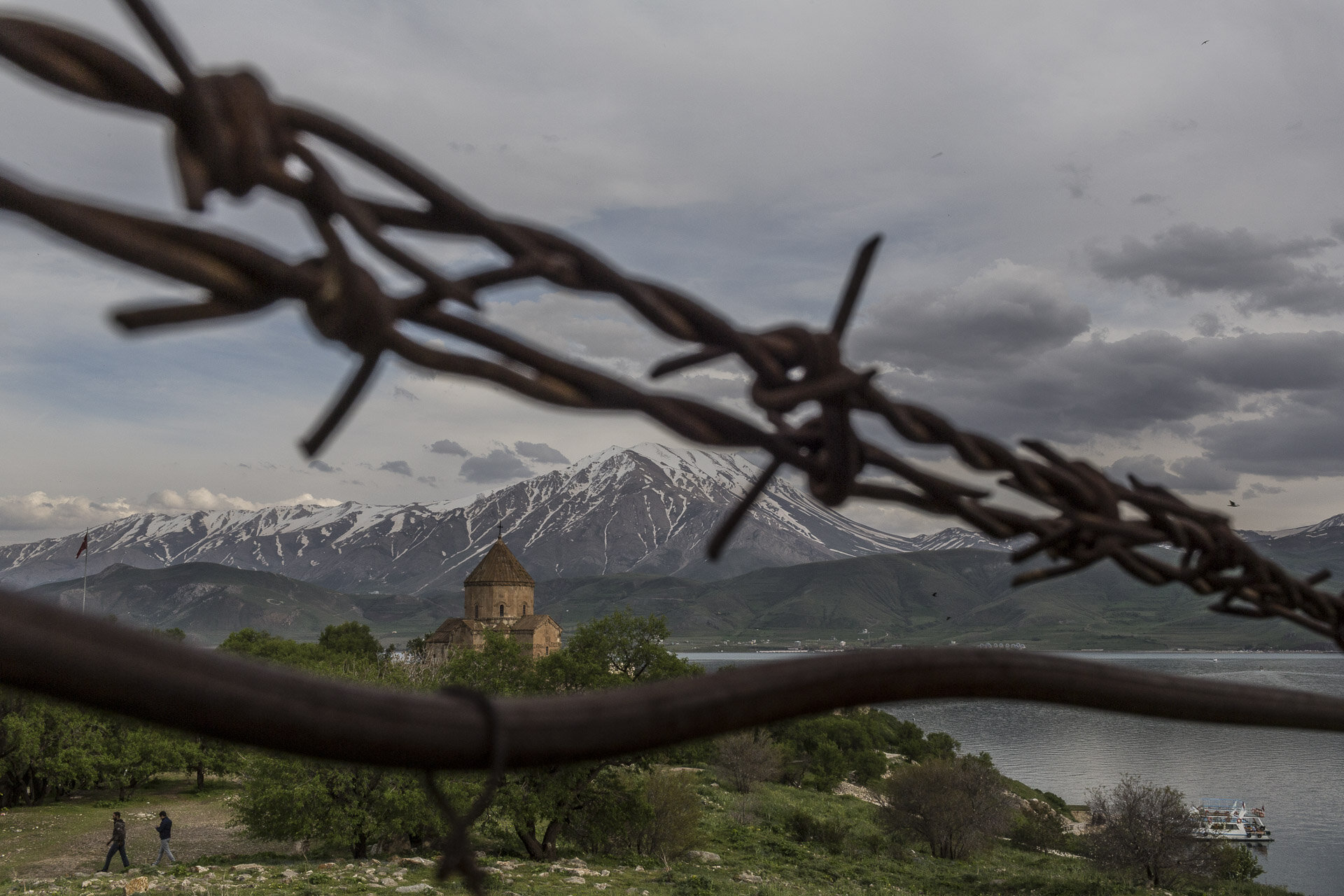
The Church of the Holy Cross, a restored church located on Akdamar Island in Van Lake considered sacred for Armenians. It is believed a large serpent lives in Lake Van, similar to Loch Ness.

Kurds doing target practice at the Güroymak Hot Spring near Bitlis in the Anatolia region of eastern Turkey.

Ethnic Kurds enjoy a dip in the Güroymak Hot Spring near Bitlis in the Anatolia region of eastern Turkey. Armenians use to live in this region prior to the genocide.

Selçuk cemetery located in Ahlat, Turkey. These graves date back to the 12th century and are the resting place for the first Turkish cemetery in Anatolia. The Selçuk people are considered the first Turkish group to populate Anatolia.

Fields that once were farmland populated by Armenians, today are open fields on the slopes of Mount Ararat near Iğdır, Turkey. For centuries, this region of Anatolia was populated by Armenians. During the genocide between 1915-1923, all Armenians fled their homes, leaving what countless people believe was buried wealth in the ground.
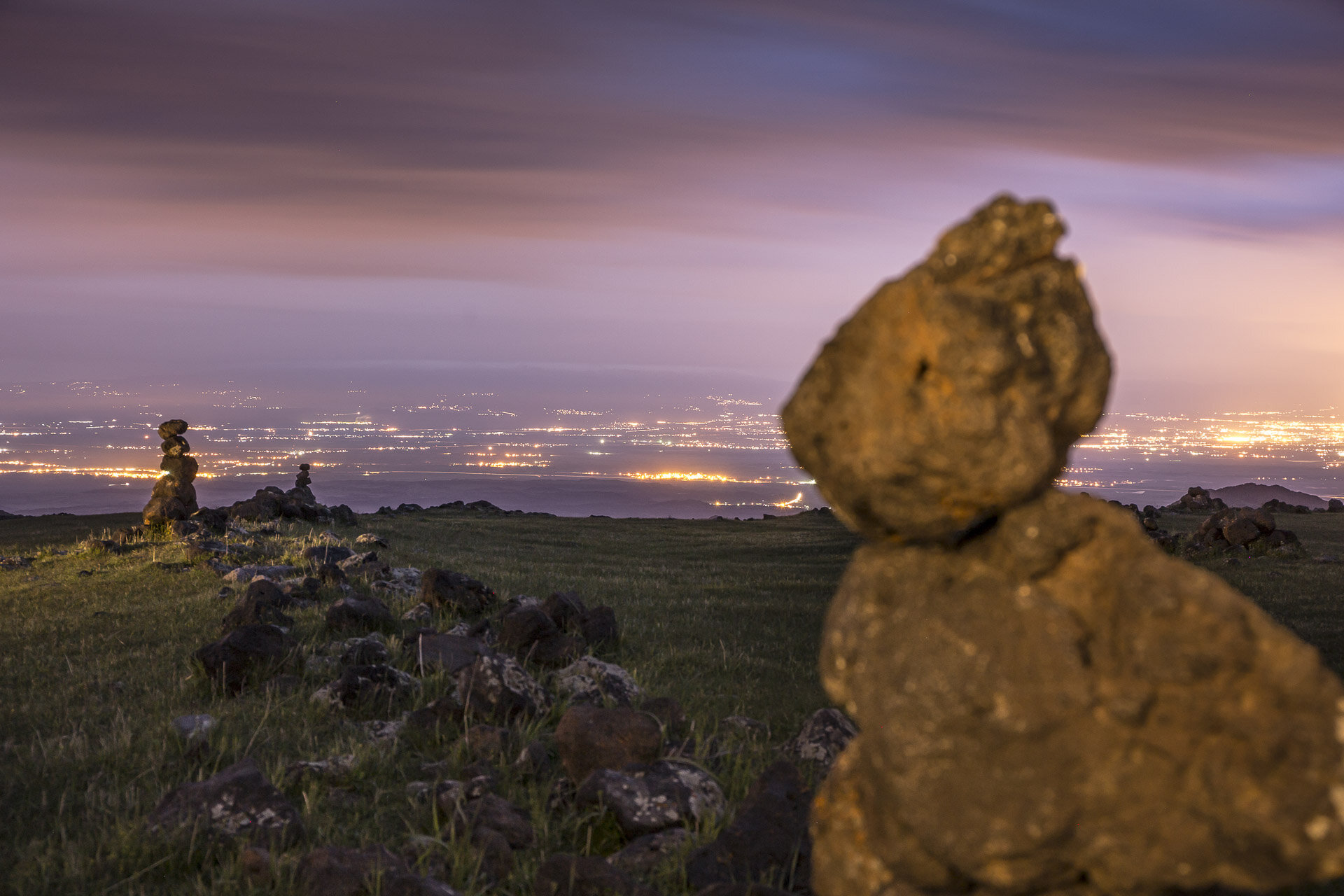
Stone markings, placed decades ago by Armenian farmers to demarcate their properties in Korhan plateau on the northern slopes of Mount Ararat in the Anatolia region of eastern Turkey, with Yerevan, the capital of Armenia, glowing in the distance.

Poppy fields just outside Iğdır, Turkey. Today this area of Anatolia and the old Armenian homes are populated by Kurds, Azeris, and Turks.

Şekernaz and Mülkünaz Fidan, holding their baby sister, in Kozluca village near Ani, Turkey. A century ago populated entirely by ethnic Armenians, today Kozluca village is populated by Kurds who continue to live in the homes of those who fled the genocide.

Children play upon old truck tires used for fencing in Çiftlik village located on the outskirts of Doğubeyazıt, Turkey, 20 k from the Iranian border. 100 years ago, Çiftlik was populated only by Armenians who often chose to live at the footsteps of sacred Mt. Ararat. Some believe Mt. Ararat is the resting place of Noah's Ark. Today Çiftlik is all Kurdish.

Xezal Alim, 60, tends to her sheep while Mount Ararat looms behind over Elmagöl village in the Anatolia region of eastern Turkey. Formerly populated by Armenians, today Kurds live in their homes overlooking the mountain considered sacred to Armenians. It is believed Mt. Ararat is the resting place of Noah's Ark.
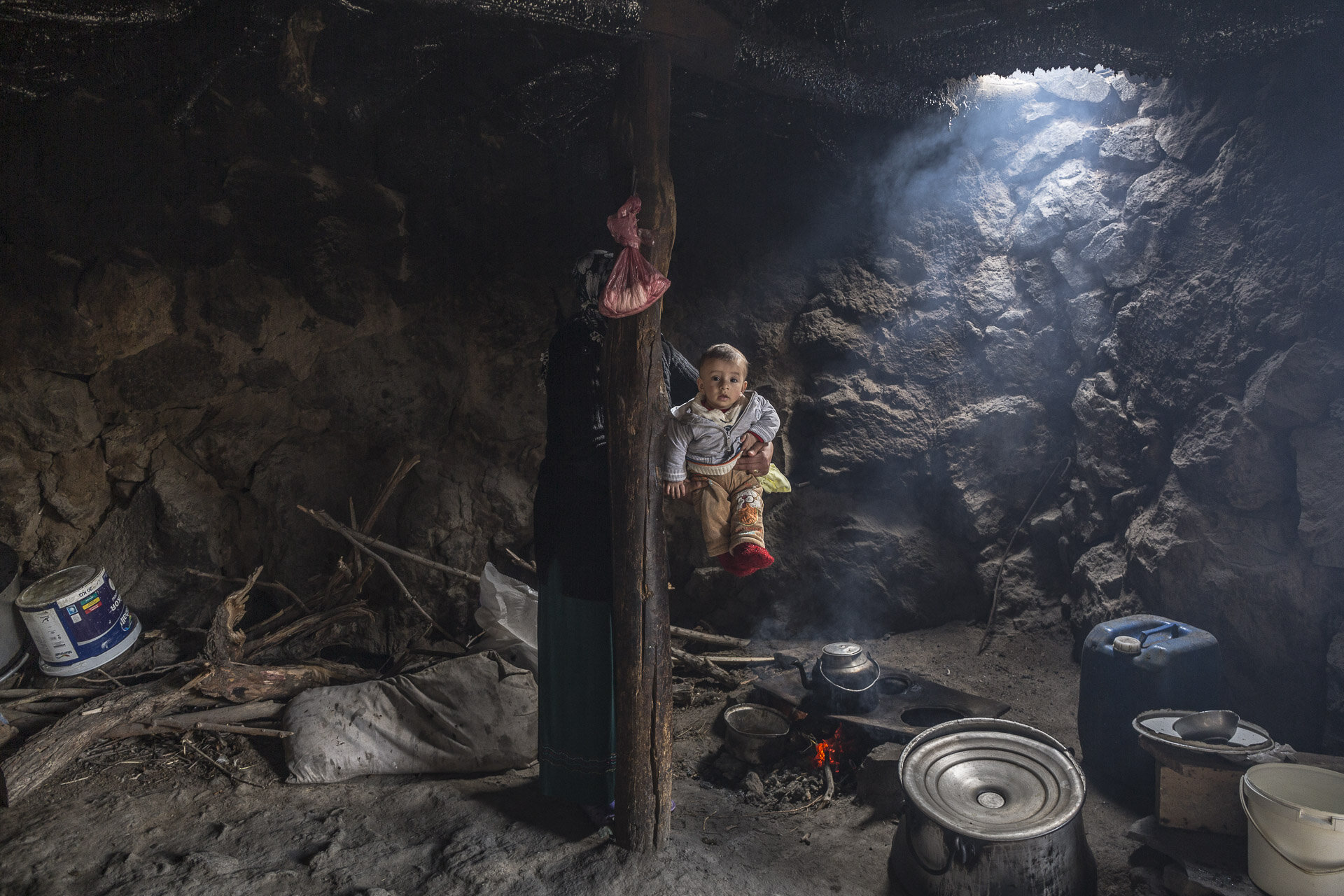
Mother holds her child while taking a break from making cheese from goats milk in a home that once belonged to an Armenian family located in Kilittasi in eastern Turkey, bordering Armenia. 100 years ago, Kilittasi was known as Bagaran, populated by ethnic Armenians.

Remains of an Armenian church in the ancient Armenian kingdom known as Bagaran, today called Kilittasi in eastern Turkey, bordering Armenia. 100 years ago, Kilittasi was known as Bagaran, populated by ethnic Armenians.

Besra Çoban, 9, does her homework while her grandmother rests, Hasi Çoban, 65, rests in a chair in an old traditional Armenian home once owned by Armenians in Kilittasi in eastern Turkey, bordering Armenia.
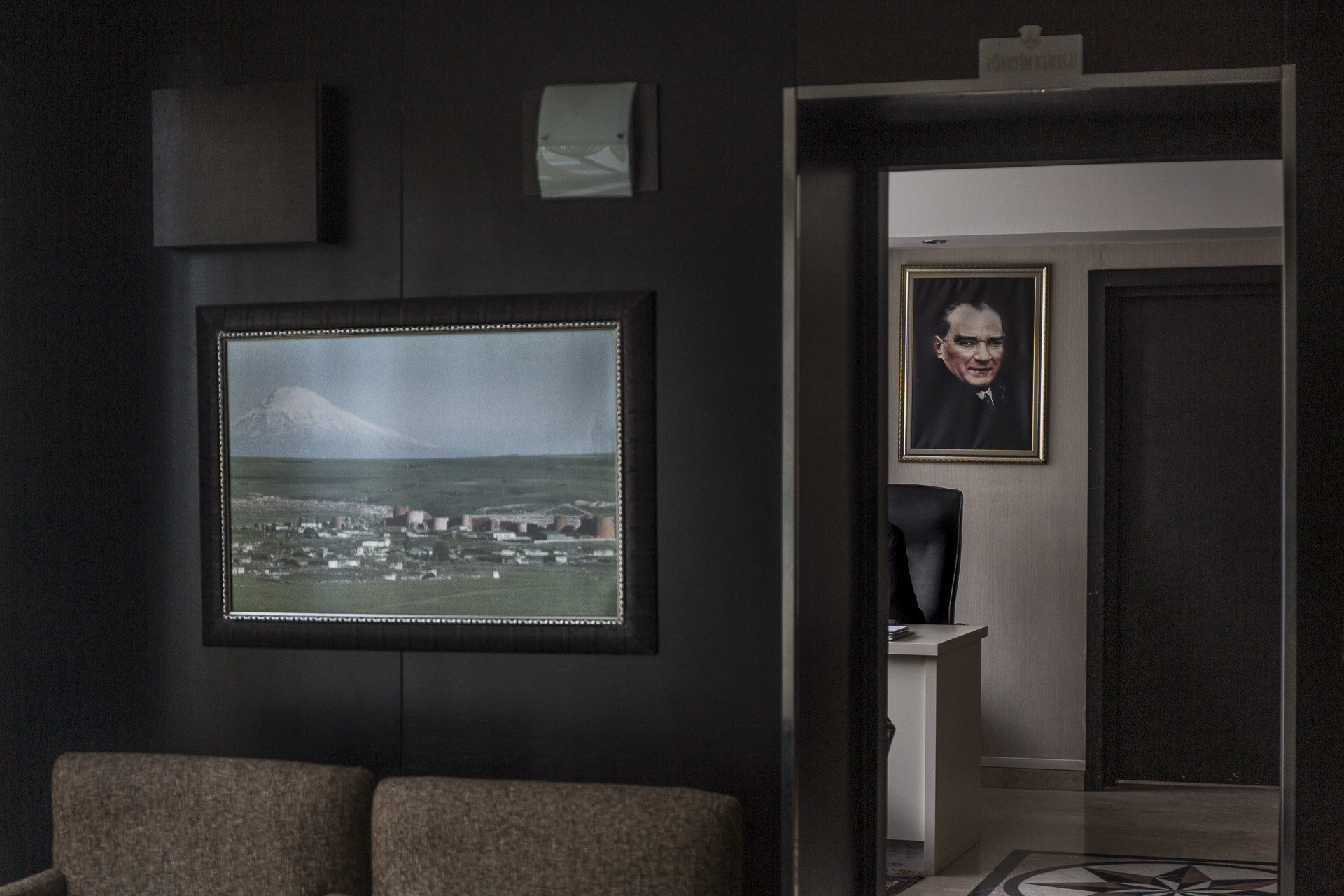
Portrait of the foundering father of modern Turkey, Kemal Mustafa Ataturk, in a hotel in Kars. While Ataturk had no direct connection to the Armenian genocide, some say he could have done more to stop the lingering persecution against Armenians. Also on the wall is a photograph of Mt. Ararat.

Derecik Village located near Kars and the border with Armenia. Evidence has been found that in the waning days of the Armenian genocide, Armenians also killed Turks and Kurds, wherein Derecik a mass grave was discovered. 100 years ago Derecik was populated by both Turkish and Armenians. Today Turks, Azeri's and Kurds live in these former Armenian homes.

Hayriye Koşkar, 79, lives in an old Armenian home in Derecik Village located near Kars and the border with Armenia. Evidence has been found that in the waning days of the Armenian genocide, Armenians also killed Turks and Kurds, wherein Derecik a mass grave was discovered. 100 years ago Derecik was populated by both Turkish and Armenians. Today Turks, Azeri's and Kurds live in these former Armenian homes.

Birds fly over the fields alongside the Kars-Ani road outside Kars, Turkey, near the border with Armenia.
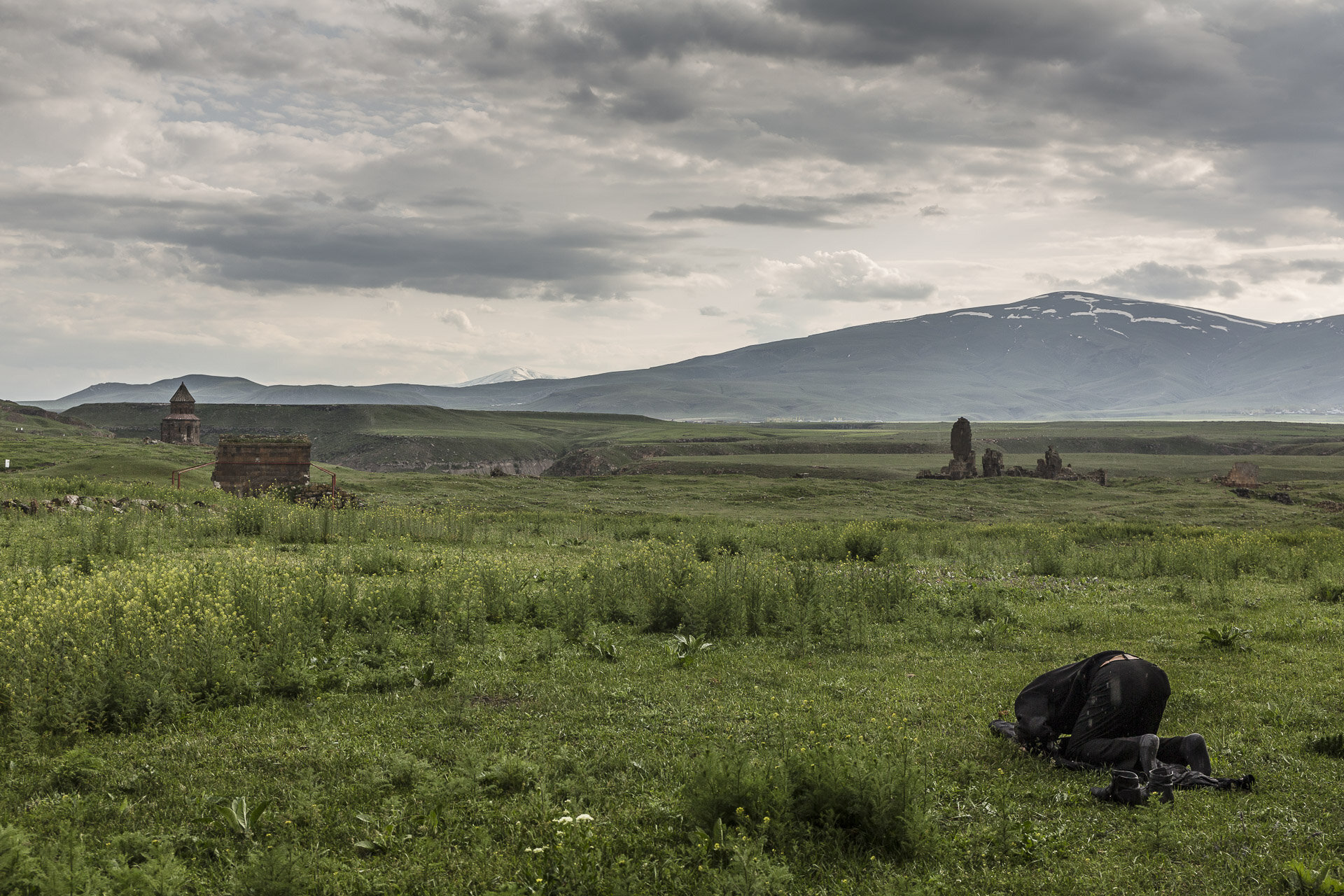
A man says evening prayers in the historic and ancient city of Ani, Turkey, in the direction of Mecca, which is also the direction of Armenia. Ani was once a thriving Armenian City, dating back hundreds of years and has been abandoned for more than three centuries.
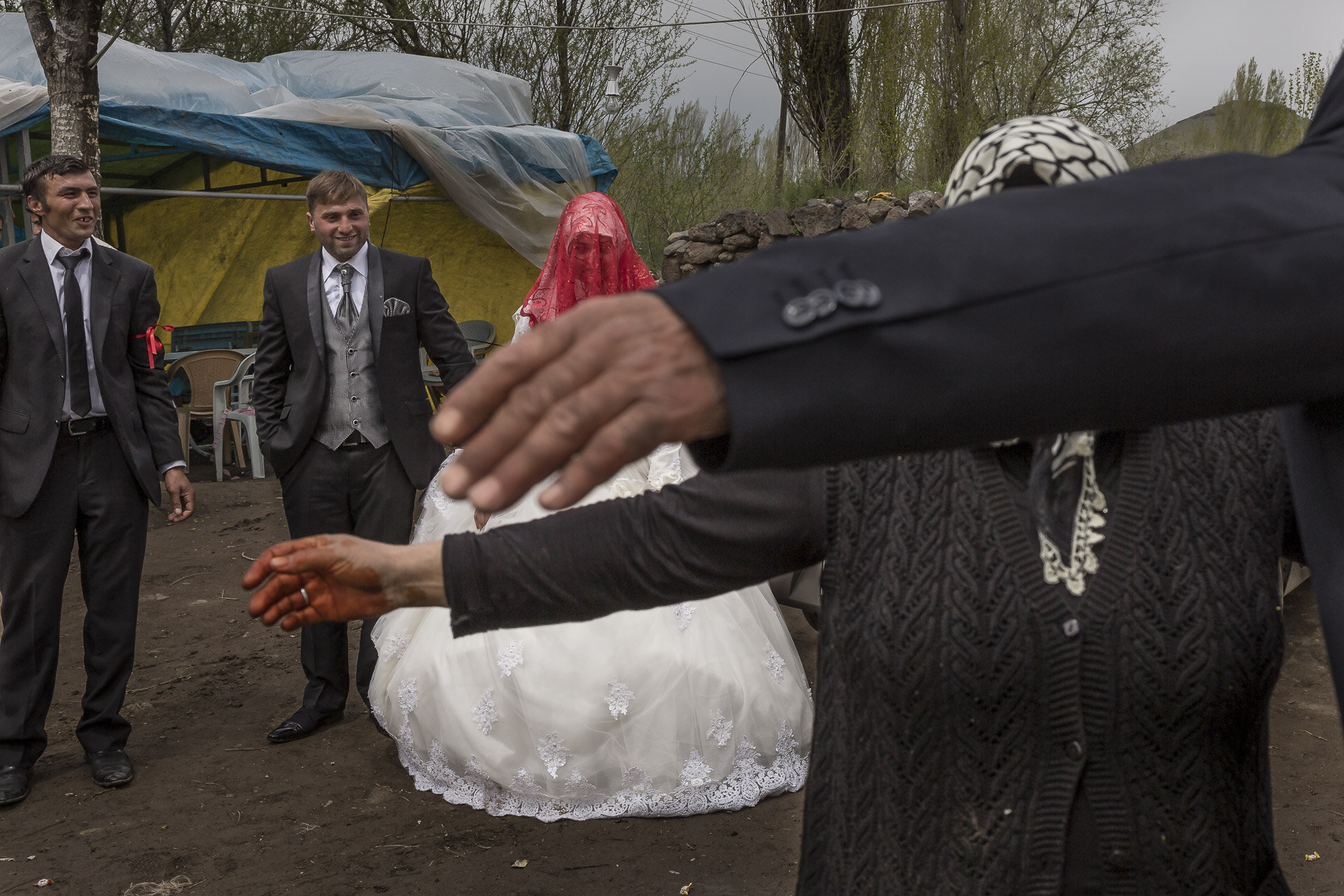
Wedding celebration of Adem Yılmaz, 25, and the bride, Seher Demirel, 18, at the grooms home in Karahan village, Kars, Turkey. Adem is an Azeri while Seher is Kurdish, a rare marriage of often conflicting ethnic groups. Karahan village was once solely populated by Armenians.

Frescos painted inside an old Armenian church in the ancient city of Ani, Turkey. Ani was once a thriving Armenian City, dating back hundreds of years. Abandoned for more than three centuries, this historical place is important to Armenians who still dream of having Ani return to Armenia. Ani was once known as the City of a Thousand Churches.
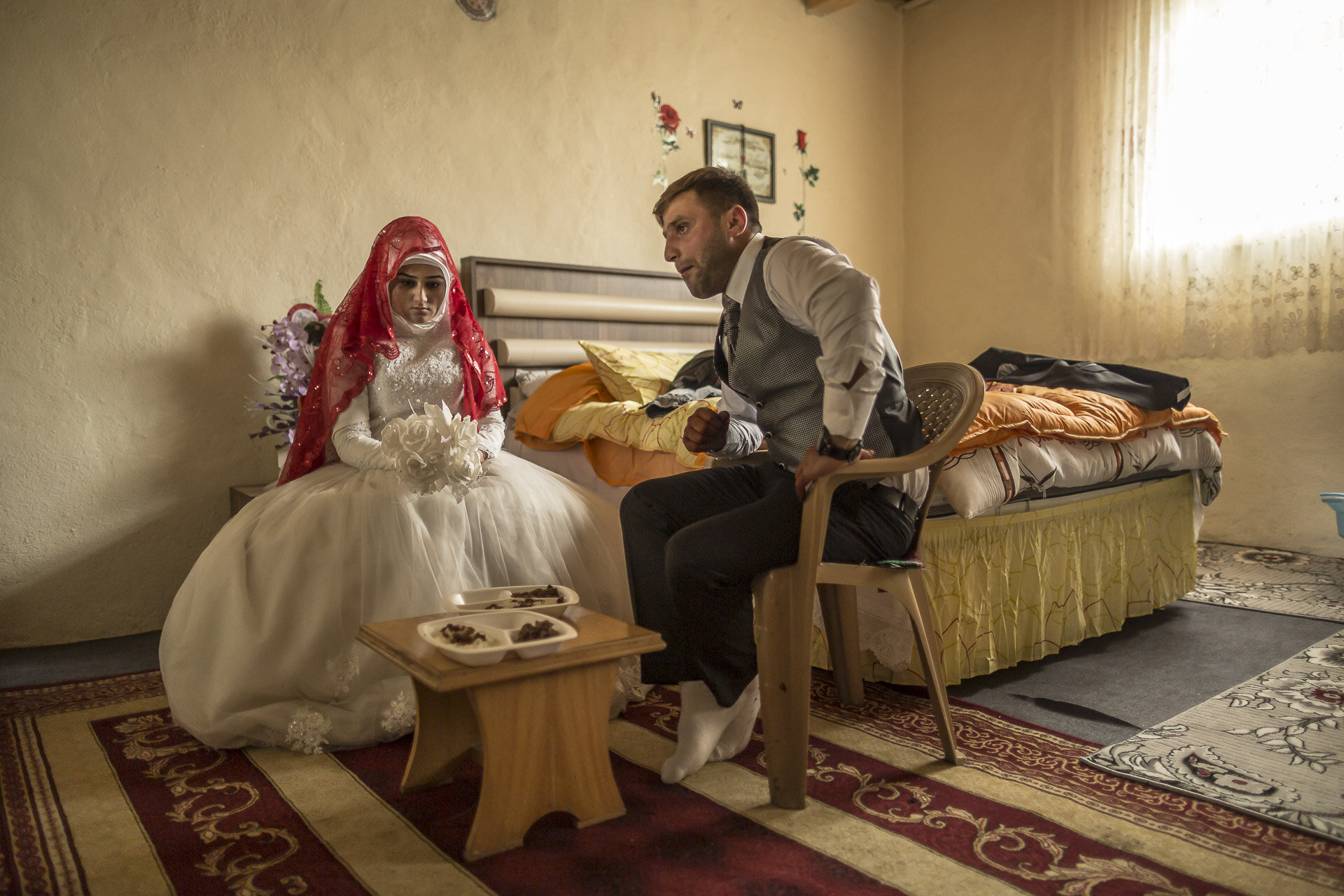
Seher Demirel, 18, with her newlywed husband, Adem Yılmaz, 25, having a traditional first meal after being married in the bedroom they will share at the home of Adem in Karahan village, Kars, Turkey. Adem is an Azeri while Seher is Kurdish, a rare marriage of often conflicting ethnic groups.
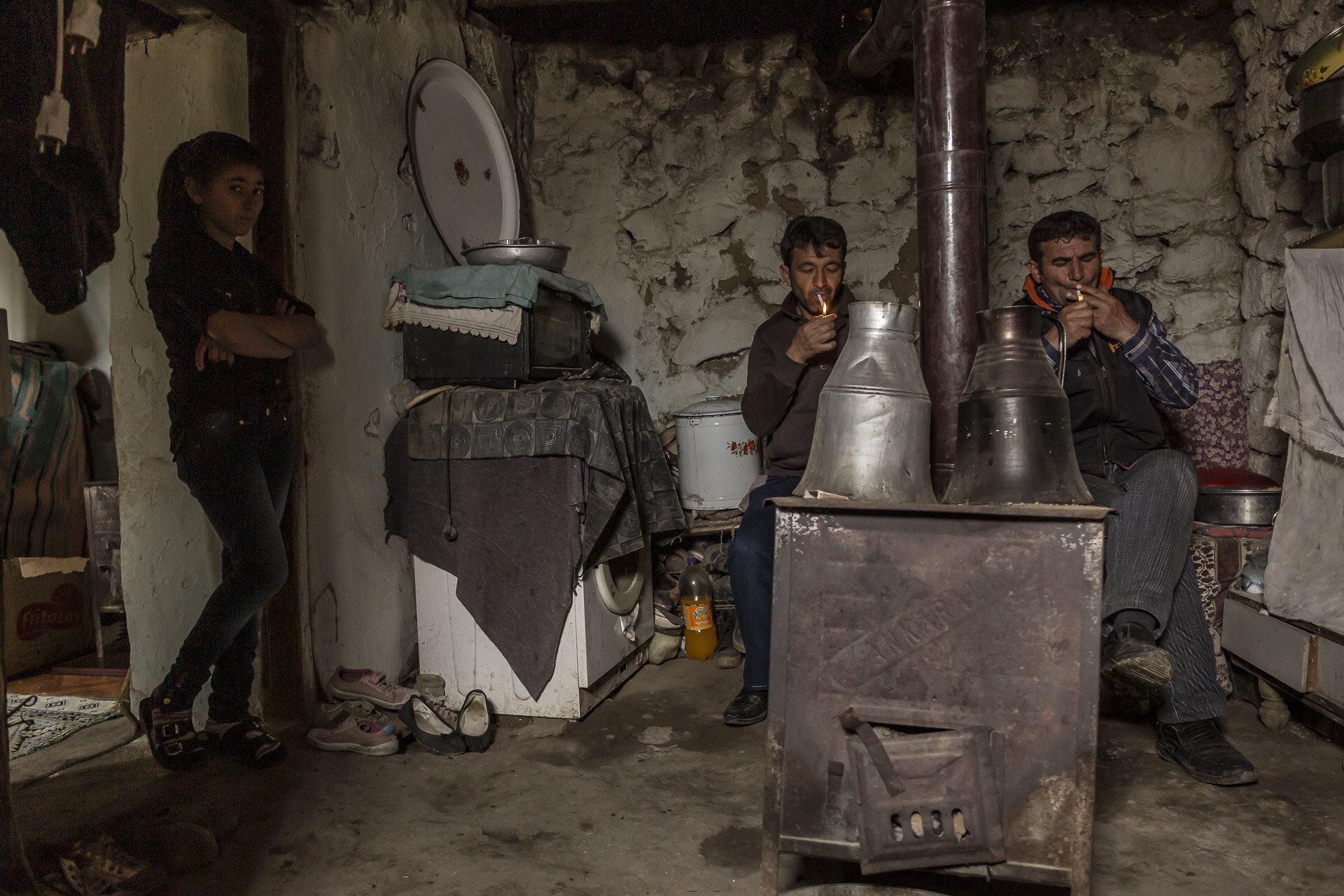
Erkan Göktaş, 41, (left) sits in his home with his cousin, Mehmet Coşkun, 45, smoking cigarettes in Karahan village in Kars, Turkey. Erkan's grandfather returned to Karahan village from Russia around 1918. All the Armenians had fled and his grandfather received ownership of the home from the Turkey government, now living in the same home once owned by Armenians.

Kurdish friends chat while walking along the border with Armenia in Kilittasi in eastern Turkey. The remains of Shushan Church on the Armenian border overlook a mosque on the Turkish side, defining the religious difference between two conflicting nations. 100 years ago, Kilittasi was known as Bagaran, populated by ethnic Armenians.

The home of Vachagan Sahakyan, where he grew up in Bagaran, Armenia. Armenians migrated from Bagaran (Bakran), Turkey, for the first time in the spring of 1918 towards different locations in Armenia. In 1921, the Armenians who came to this remote border village build traditional Armenian stone-built homes. In 1968, they changed the village name from Mirzakhan to Bagaran after the town their ancestors left in Turkey.

Picnicking at night beneath apricot trees—and a giant cross shining defiantly into Turkey—villagers in the border town of Bagaran, Armenia, belt out songs of memory, cultural endurance, and survival. The bitter dispute between Armenia and Turkey dating back four generations has paralyzed economic, diplomatic, and political progress in the region.

Graveyard in Bagaran, Armenia, where a family born before the genocide, and who died after the genocide, are buried, overlooking Turkey. The ancient crossroads between Turkey’s eastern highlands and the Caucasus remains in the thrall of ghosts.